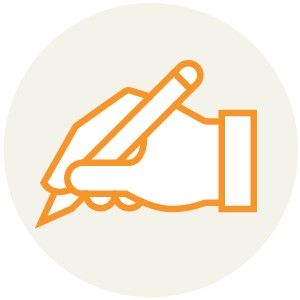Planning for walking
On this page
- Pedestrian network characteristics
- Developing walking network plans
- Mapping walkable catchments (‘ped sheds’)
- Prioritising walking infrastructure
- Walking strategies and local action plans
- Pedestrian demand forecasting
- Accessing public transport
- Community engagement – for developing local plans and strategies
- Funding
Pedestrian network characteristics
Networks should be:
- accessible
- connected
- legible
- comfortable
- convenient
- pleasant
- safe
- secure
- universal.
TMR endorsed guidance
- Walking Network Planning Guidance (Department of Transport and Main Roads, 2021)
- RPDM Edition 2: Volume 3, Supplement to Austroads Guide to Road Design Part 6A: Paths for Walking and Cycling, Section 3 Path User Considerations (Department of Transport and Main Roads, 2020)
Other useful resources
- Guide to Traffic Management Part 4: Network Management Strategies, Section 4.7 Pedestrian Networks (Austroads, 2020)
- Guide to Road Design Part 6A: Paths for Walking and Cycling, Section 3. Path user considerations (Austroads, 2017)
- Webinar: Pedestrian Planning Concepts (Austroads, 2020)
- Webinar: Pedestrian Planning and Design for Residential Areas (Austroads, 2021)
- Webinar: Pedestrian Planning and Design for Activity Centres (Austroads, 2021)
- Webinar: Pedestrian Planning and Design at Intersections (Austroads, 2021)
- Webinar: Road Space Allocation for Pedestrians (Austroads, 2021)
- The Planning for Walking Toolkit (Transport for London, 2020)
Developing walking network plans
Walking network plans can be developed at varying scales, depending on:
- the whole Local Government Area (LGA)
- the Central Business District(s)
- a selection of centres/towns
- specific areas/precincts within centres/towns e.g. around a school or public transport node.
TMR endorsed guidance
- Walking Network Planning Guidance (TMR, 2021)
- RPDM Edition 2: Volume 3, Supplement to Austroads Guide to Road Design Part 6A: Paths for Walking and Cycling, Commentary 1 (Department of Transport and Main Roads, 2020)
Other useful resources
- Guide to Traffic Management Part 4: Network Management Strategies, Section 4.7 Pedestrian Networks (Austroads, 2020)
- Guide to Road Design Part 6A: Paths for Walking and Cycling, Commentary C1.1 Planning and Need for a Path (Austroads, 2017)
- Global Street Design Guide, 6.3.2 Pedestrian Networks (Global Designing Cities Initiative, 2016)
Mapping walkable catchments (‘ped sheds’)
A walkable catchment (also known as a ‘ped shed’) analysis is a tool to assess the walkability of a neighbourhood.
They can be used to assess street layouts for new developments or existing areas, to consider improvements which can be made to connectivity. They can also be used to compare locations for walkability and connectiveness.
A walkable catchment analysis typically compares the theoretical versus actual walkable catchment within 5 minutes (400m) or 10 minutes (800m) walk from a destination, however, catchments up to 20 minutes’ walk may also be used if appropriate.
TMR endorsed guidance
- Walking Network Planning Guidance (Department of Transport and Main Roads, 2021)
Prioritising walking infrastructure
Once walking route audits have been completed, potential projects should be listed and prioritised. A cost estimate should also be determined as part of the prioritisation process.
TMR endorsed guidance
- Walking Network Planning Guidance (Department of Transport and Main Roads, 2021)
Other useful resources
- Local Cycling and Walking Infrastructure Plans: Technical Guidance for Local Authorities (Department for Transport, 2017)
Walking strategies and local action plans
The Queensland Walking Strategy 2019-2029 shares a vision and objectives for walking in Queensland.
The International Charter for Walking shares a vision and actions based around the following strategic principles:
(1) Increased inclusive mobility
(2) Well designed and managed spaces and places for people
(3) Improved integration of networks
(4) Supportive land-use and spatial planning
(5) Reduced road danger
(6) Less crime and fear of crime
(7) More supportive authorities
(8) A culture of walking.
TMR endorsed guidance
- Queensland Walking Strategy 2019-2029, Benefits of walking, page 5 (Department of Transport and Main Roads, 2019)
Other useful resources
- Guide to Traffic Management Part 4: Network Management Strategies, Section 4.7 Pedestrian Networks (Austroads, 2020)
- International Charter for Walking (Walk21, 2006)
- Developing a Walking Strategy - A Guide for Councils (Victoria Walks, 2013)
Pedestrian demand forecasting
Techniques include:
- similar conditions study
- aggregate behaviour
- sketch plan
- discrete choice
- travel models.
TMR endorsed guidance
- Pedestrian Demand Forecasting Guideline (Department of Transport and Main Roads, 2021)
- Pedestrian Demand Forecasting Tool (Department of Transport and Main Roads, 2021)
Other useful resources
- Guide to Traffic Management Part 3: Transport Study and Analysis Methods, Appendix E Table E.1: Ways to assess future demand for walking (Austroads, 2020)
- Webinar: Measuring Pedestrians – Survey and Audit Methods (Austroads, 2020)
Accessing public transport
Walking is the preferred and most important mode of access to the TransLink network.
For assessing walkable catchments around high-capacity public transport nodes, it is recommended that a ten-minute walking distance is used (800 metre radius from the node).
TMR endorsed guidance
- Walking Network Planning Guidance (Department of Transport and Main Roads, 2021)
- Public Transport Infrastructure Manual, Chapter 3.3 Pedestrian infrastructure (TransLink, 2020)
Community engagement – for developing local plans and strategies
Methods to seek input from the community include:
- existing feedback to council
- focus groups
- street intercept surveys
- phone surveys
- school surveys and audits
- walking audits
- community groups
- crowd sourcing software.
TMR endorsed guidance
- Active Transport Investment Program Community and Stakeholder Engagement Guide (Department of Transport and Main Roads, 2019)
Other useful resources
- Developing a Walking Strategy - A Guide for Councils (PDF, 1.7MB) (Victoria Walks, 2013)
- Queensland Walks (Queensland Walks, 2020)
Funding
Read more about funding sources to deliver more walkable communities.
- Last updated 01 February 2024

